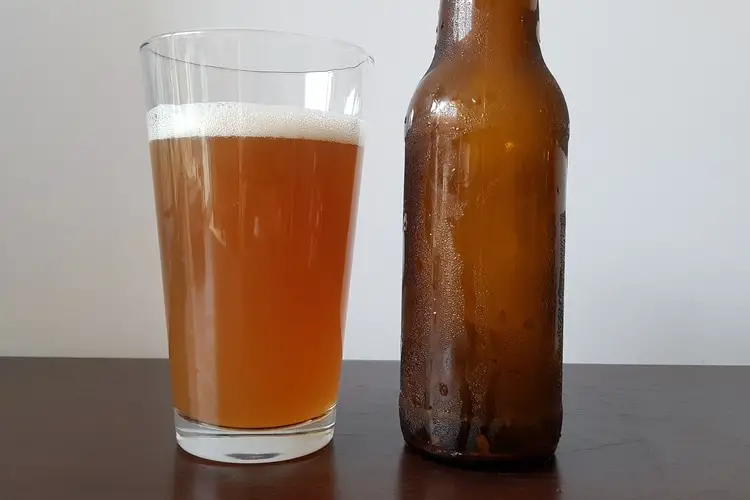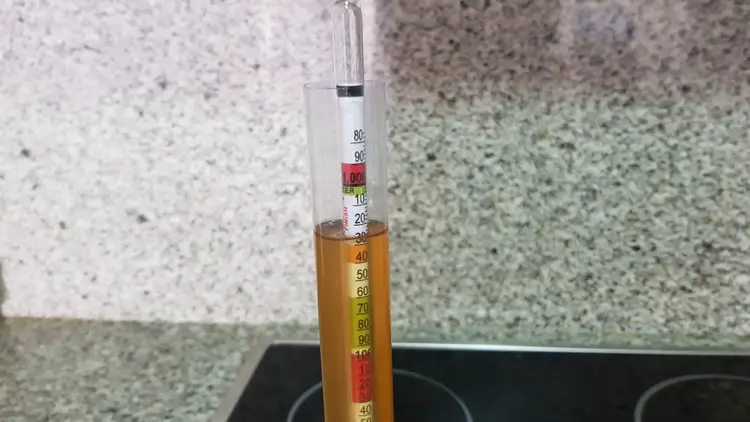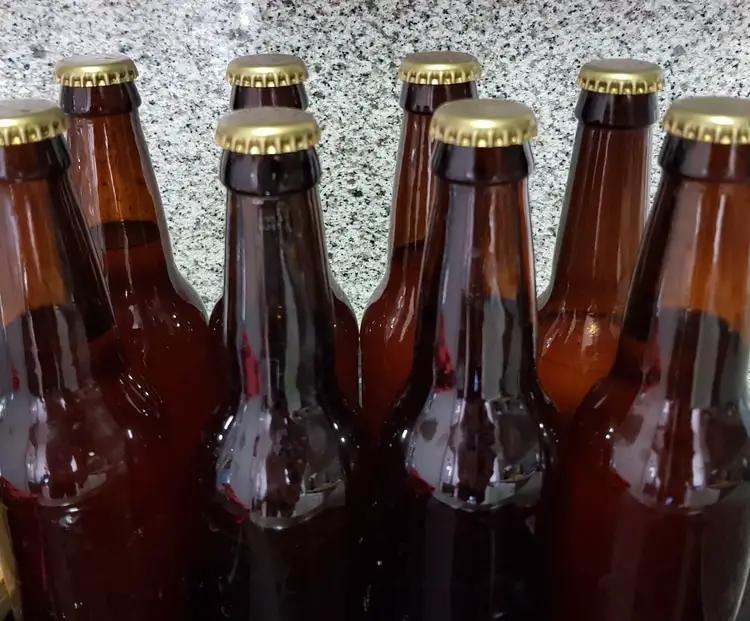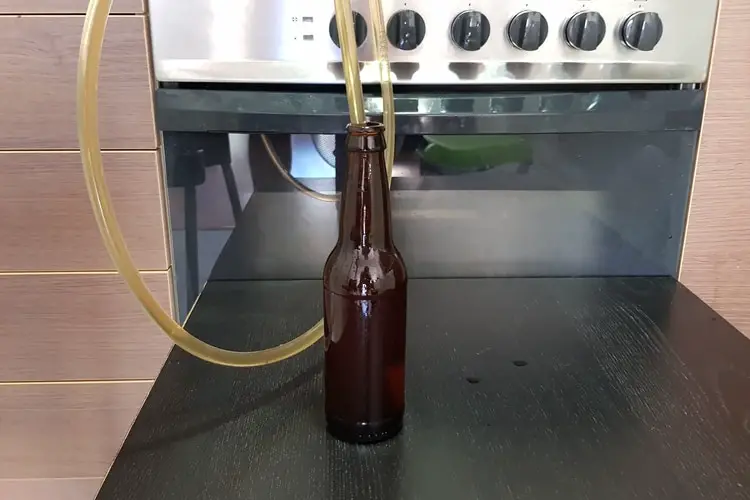Brew day is the most fun when making beer, second only to the drinking itself. There are those that are gung-ho about bottling and ready by the time the airlock stops bubbling. They get carried away and bottle too early. Here is a best- and worst-case scenario.
Bottling too early could result in broken bottles: messy, chain-reactive, and possibly dangerous. Bottling a little early could result in naturally carbonated beer if you apply precision focus.
There are varying degrees of early, which are as follows.
- Busted bottles
- Gushing beer
- Perfect, naturally carbonated beer
- Some combination of the above
When we bottle, we add more sugar to prime the beer. The bubbles for drinking are produced after fermentation by priming (adding sugar to reactivate yeast and create new bubbles in the package).
If we have sugar in the beer and also prime, then the beer is out of balance, albeit in a different way.
Case #1: Broken Bottles in the Closet
Fermentation produces two main by-products: ethyl alcohol and CO2 – Carbon Dioxide gas.
The ethyl thankfully stays in the bottle with the water, protein and hops to make the tasty beverage of our endeavors.
Most of the gas escapes into the air harmlessly, though at times too pungent.
After about two weeks the beer is ready to package.
But what if it’s packaged early?
Priming sugar is measured carefully, about ½ – ¾ cup of dextrose for five gallons.
If the beer has not fully attenuated (metabolized and converted the sugar) there will still be a high sugar content in the beer.
Therefore, following the normal priming procedures, your beer will be over-primed.
If there is too much pressure, (warning, onomatopoeias ahead) then Kerschprack! Kerschprack! Kerschpreck! Pertoooof!
The bottles reached their limit of tensile strength and burst, an extremely demoralizing occurrence.
It is painful to clean up at best and makes your spouse, mate, or roommates angry at the worst.
Given time, the yeast will finish what is in the fermenter and have plenty of energy left to eat what sugar you add.
Case #2: Just Over-Primed
Over-priming is adding too much sugar at packaging, far more than the beer needs to make sufficient bubbles for drinking.
Should the beer get bottled early and receive the normal amount of primer, there is a simple solution.
Drink up!
When I brewed beer, I was more often than not chomping at the bit to try it – sampling for record keeping purposes, of course.
I would start drinking it within a week.
Usually the beer is not quite ready in 7 days as it takes about two weeks for the bubbles to come on.
Chill a bottle after one week and if you crack it, it off gasses, and forms a big head when it hits the glass, then it’s ready.
The beer could be over-primed or was bottled early.
Time to drink up.
If a party is not practical within the week, get the beer cooled down.
Fill up the fridge, the garage fridge or find a garage fridge post-haste.
The beer will be fine.
However, if it sits in a warm closet or spring/ fall temperature garage, those bottles could start bursting in 2-4 weeks.
By the same token, if you have a garage with a mild winter and the temperature averages 30-40˚ F (0-4° C) during the course of the day AND night, store it there.
Case #3: Natural Carbonation
One method is to deliberately bottle or package beer early.
In this case, the beer is still fermenting though slowly and in secondary fermentation.
At just the right point, bottle it when it still contains residual sugar.
For example, the gravity reading is about 1.014 – 1.016.
From previous experience you know it will attenuate down to about 1.010.
It will form the perfect amount of bubbles, no priming sugar needed.
More details of this may be found in the article Fizz Drops vs. Priming Sugar: What’s Best for Homebrewers?

When is Fermentation Really Finished?
Primary fermentation lasts from 3-6 days wherein the yeast converts most of the fermentables.
Secondary fermentation can last 7-14 days, and this is a slower process.
The last 10-20% of maltose is metabolized by the yeast.
The yeast flocculates (rests on the bottom) and conditions the beer.
Hydrometer as Vital Tool

As you learn your craft, use the hydrometer, often and well.
There are multiple stages wherein it helps you.
- When sparging, measure the gravity of runnings from the mash.
- Never let the OG dip below 1.010
- (adjust for temperature – hot wort will not give an accurate reading)
- Measure the original gravity when adding your wort to the fermenter.
- Make sure the extract is well mixed with water.
- Try to measure within the 60-65˚ range
- Taste it: your wort will tell you a lot about the future character of your beer.
- Measure after primary fermentation: 3-5 days.
- Be absolutely meticulously sanitary
- Do not disturb the beer
- Taste it, it will still be sweet, yet the hops and alcohol will begin to stand out
- Measure after secondary fermentation: 7-14 days.
- Be absolutely meticulously sanitary
- Do not disturb the beer
- Taste it, it will resemble beer, just still.
- As discussed in the natural carbonation section, you can bottle early, and achieve natural bubbles
As fermentation concludes, the airlock will stop bubbling or bubble every 4-5 seconds.
It rarely completely stops, wherein the airlock is completely still but it does occur.
To explore this in detail please reference: How to Tell When Fermentation Is Done Without a Hydrometer.
Other Roles of the Yeast
Yeast reabsorbs off-flavors that can affect your beer.
Diacetyl, esters, and phenols are all compounds that naturally form in beer and in proper amounts are desirable.
Leaving your beer on the yeast for at least 2 weeks is a key process.
A tiny butterscotch finish is nice in an English Brown.
A slight apple nose compliments a hop nose in an American Golden Ale.
Phenols add tartness to a Belgian White Beer.
All desirable flavors in moderation.
Bottling Day Done

For some, bottling is a chore.
It certainly was for me.
I had no special washer or drying rack, just a tiny country kitchen and some paper towels for drying.
Some make a party of it, celebrating it as the integral part of brewing that it is, no less important the mash, boil or sugar-to-starch conversion.
During the process, be patient, watch fermentation carefully, and use the hydrometer to effect.
Keep good records, follow patterns of the beer’s processes: fermentation times, temperatures, and flavors of the various stages, then it becomes second nature.
Bottling beer early is not a big deal.
It is a mistake to easily recover from.
Make sure to be aware of it.
Broken bottles are messy and dangerous.
Have a back-up plan and adjust for the next go round.

